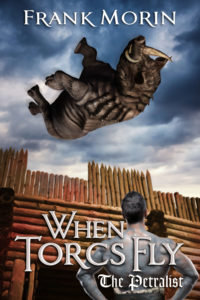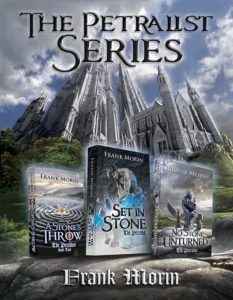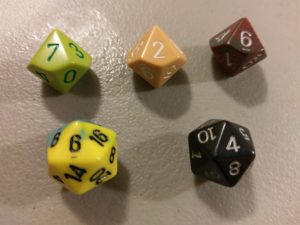Writing a series wasn’t really the plan.
After several years of writing stories mostly intended to help me level up in my abilities, two years ago I felt I had reached the point where I was writing publishable work. After some debate, I decided to self-publish and began to plan writing my debut novel. I had a few different ideas that were good starting points, but I decided on a fantasy adventure novel focused on a magical portal found on Mount Everest.
I chose this idea for a few reasons:
- I loved the idea. It combined three of my favorite things: fantasy, adventure and the Himalayas. I didn’t want to spend time working on something that didn’t excite me.
- I felt it would be the easiest to market of my available ideas. Everest was a known quantity that I hoped would help me in discoverability, and I felt the setting and concept was something that would stand out.
- The idea had long-term potential. If the Everest book was successful, there were many options for other books that could be written in the same universe.
UNDER EVEREST was written during the next six months as a one-and-done story, with hooks that could lead to other novels in the future if I so chose. When I arrived to the point where I thought I had the book close to launch ready, I consulted my friends who were already self-publishing about how best to move forward.
Consistently they had two questions:
- Could this be a series?
- Could you afford to wait and write more in the series before releasing?
After much thought and consternation, I decided to delay the launch of UNDER EVEREST by a year and re-purpose the project as a trilogy. Since I had a book that was fairly self-contained and I didn’t want to re-write it from the ground up, I decided to mirror what I felt was the methodology of the original STAR WARS film series.
That is:
- Opening story introduces characters and arcs that mostly resolve inside the same story, but with hints to larger problems and a bigger world.
- Second and third stories are essentially one connected tale that ends on a cliffhanger at the conclusion of story two and significantly broadens the world and deepens the characters.
I decided I would outline Books 2 and 3 at the same time and write them in immediate succession, so to better ensure they felt like a connected element. Over a few weeks that outline produced the road map through SEAS OF EVEREST and DRAGONS OF EVEREST, and the rest of 2017 was spent writing those books and modifying UNDER EVEREST to better fit the new model.
Now that I am on the other side of that project and all three books are approaching release, I can look back on the challenges and advantages I discovered while writing an entire trilogy before releasing any of it.
CHALLENGES
Certainly the most immediate challenge to this decision was that I was putting off revenue, likely for a year or more. At the time I had no idea how long it would take me to write two more books in the series, but a release of UNDER EVEREST was now off the table until the other two books could be done. I was fortunate to be in a position where I could afford to wait.
Next I had to take those additional hooks I had left myself and see if there was a workable series there. I had left a lot of dangling threads there, but I didn’t have a solid plan as to where most of them would lead. Additionally I had left myself with a real story challenge in the ending to UNDER EVEREST, scattering my heroes to different locations. Any new story would have to have multiple narratives, which was a challenge I had never tackled before.
ADVANTAGES
The primary advantage should be sales, but I admit that will be hard to prove even after the books release. My hope is I will see more sales and a stronger brand building than if I had released UNDER EVEREST as a stand-alone, but there’s no real way to know that.
As I pushed through this process though, I found myself finding some additional unexpected benefits. As the character’s voices began to grow deeper and stronger in later books, I had the ability to go back to the first book and add those voices from the beginning. I was able to craft themes and character arcs that progressed through all three novels. Most importantly, I could correct plot dead-ends and cul-de-sacs before they ever saw print, cutting or foreshadowing elements as needed.
In short, writing all three books in the series before releasing them allowed me to create a series with a level of cohesion I don’t think I could have achieved writing them one at a time.
IN CONCLUSION
So did it work? I suppose the final truth of that answer is still a few months away when I finally launch the series and get feedback from readers. It certainly meant doing a lot of writing without seeing any return on my investment of money and time. Yet from my perspective the advantages were well worth the tradeoffs. It allowed me more time to find the the true voice for my characters, to be less hamstrung by earlier plot decisions that became dead ends, and most importantly to help me build a cohesive series that I am very proud of.
This is now my new model going forward, and it is one I recommend as long as you can afford the wait between releases.
 It seems we don’t get nearly enough days to celebrate a completed project. We work for weeks, months, and sometimes even years to release a book worthy of our fans. The celebration is never big enough or long enough, but there’s nothing like holding a new book in your hands (even if it’s a kindle copy).
It seems we don’t get nearly enough days to celebrate a completed project. We work for weeks, months, and sometimes even years to release a book worthy of our fans. The celebration is never big enough or long enough, but there’s nothing like holding a new book in your hands (even if it’s a kindle copy).


